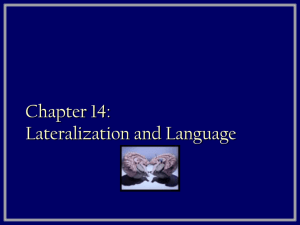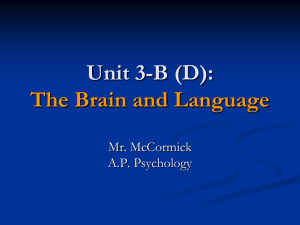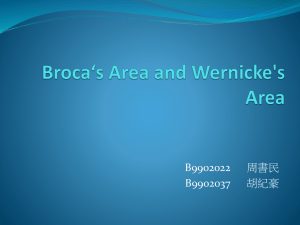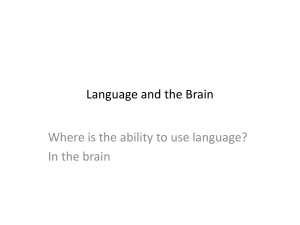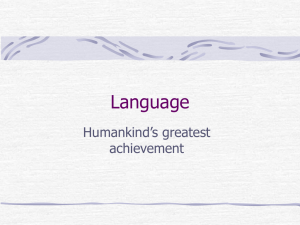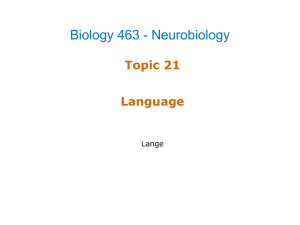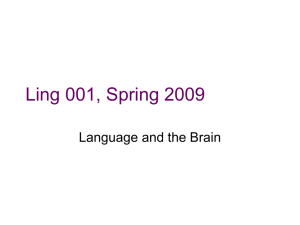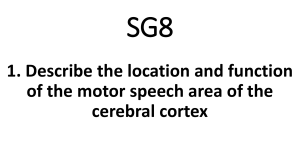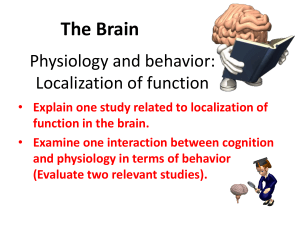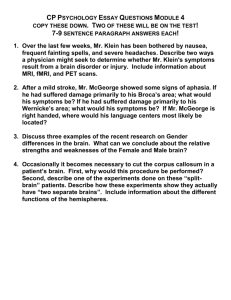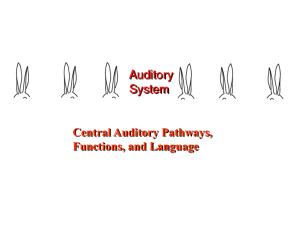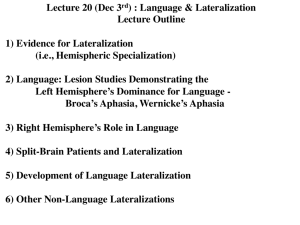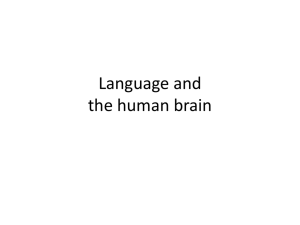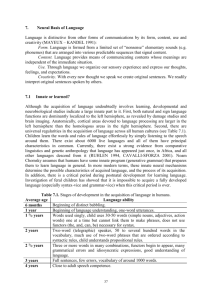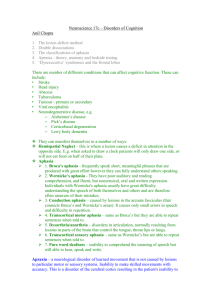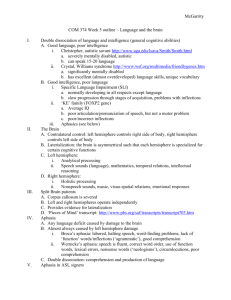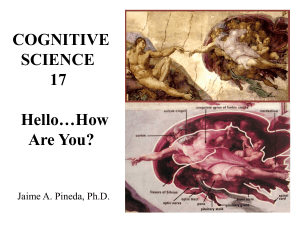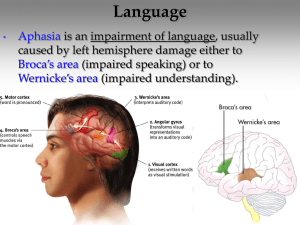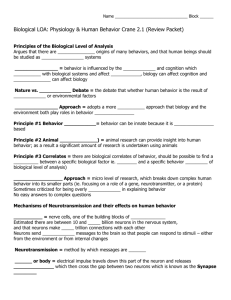Lecture 40 outline (Language)
advertisement
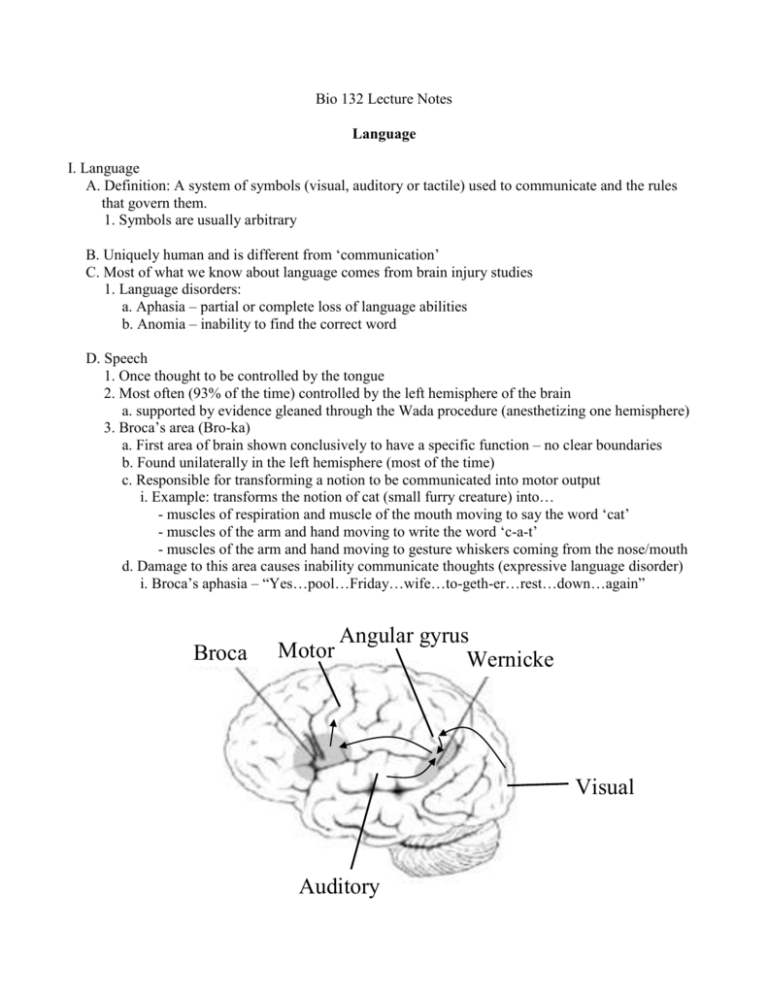
Bio 132 Lecture Notes Language I. Language A. Definition: A system of symbols (visual, auditory or tactile) used to communicate and the rules that govern them. 1. Symbols are usually arbitrary B. Uniquely human and is different from ‘communication’ C. Most of what we know about language comes from brain injury studies 1. Language disorders: a. Aphasia – partial or complete loss of language abilities b. Anomia – inability to find the correct word D. Speech 1. Once thought to be controlled by the tongue 2. Most often (93% of the time) controlled by the left hemisphere of the brain a. supported by evidence gleaned through the Wada procedure (anesthetizing one hemisphere) 3. Broca’s area (Bro-ka) a. First area of brain shown conclusively to have a specific function – no clear boundaries b. Found unilaterally in the left hemisphere (most of the time) c. Responsible for transforming a notion to be communicated into motor output i. Example: transforms the notion of cat (small furry creature) into… - muscles of respiration and muscle of the mouth moving to say the word ‘cat’ - muscles of the arm and hand moving to write the word ‘c-a-t’ - muscles of the arm and hand moving to gesture whiskers coming from the nose/mouth d. Damage to this area causes inability communicate thoughts (expressive language disorder) i. Broca’s aphasia – “Yes…pool…Friday…wife…to-geth-er…rest…down…again” Broca Motor Angular gyrus Wernicke Visual Auditory 3. Wernicke’s area (Veer-nick-eeze) a. Area discovered by Karl Wernicke, a colleague of Broca. b. Found unilaterally in the left hemisphere (most of the time) c. Responsible for transforming sensory input of symbols into a notion or thought. i. Example: transforms the letters ‘c-a-t” into the notion of cat (small furry creature) ii. Symbol can be visual, auditory, or tactile d. Damage to this area causes inability understand language (receptive language disorder) 4. Arcuate fasciculus a. Large bundle of neurons connecting Wernicke’s area to Broca’s area. d. Damage causes conduction aphasia i. Patients have difficulty repeating what they are asked to repeat 5. Angular gyrus a. Thought to transform written symbols into a code Wericke’s area can understand E. Deficits in the deaf 1. Deaf patients with damage to Broca’s or Wernicke’s areas show similar language impairments as non-deaf patients a. Have no trouble moving arms though F. Split Brain Studies 1. Patients with severe epilepsy had their corpus callosums cut a. Corpus callosum is a huge neural pathway (200 million axons) connecting hemispheres 2. Patients shown objects in right visual field were could articulate what they saw 3. Objects shown in the left visual field could not be articulated a. Patients seems to know what they saw if pressed. 4. Occasionally writing and speaking controlled by opposite hemispheres 4. Right hemisphere seems responsible for ability to draw complex figures or solving spatial puzzles
